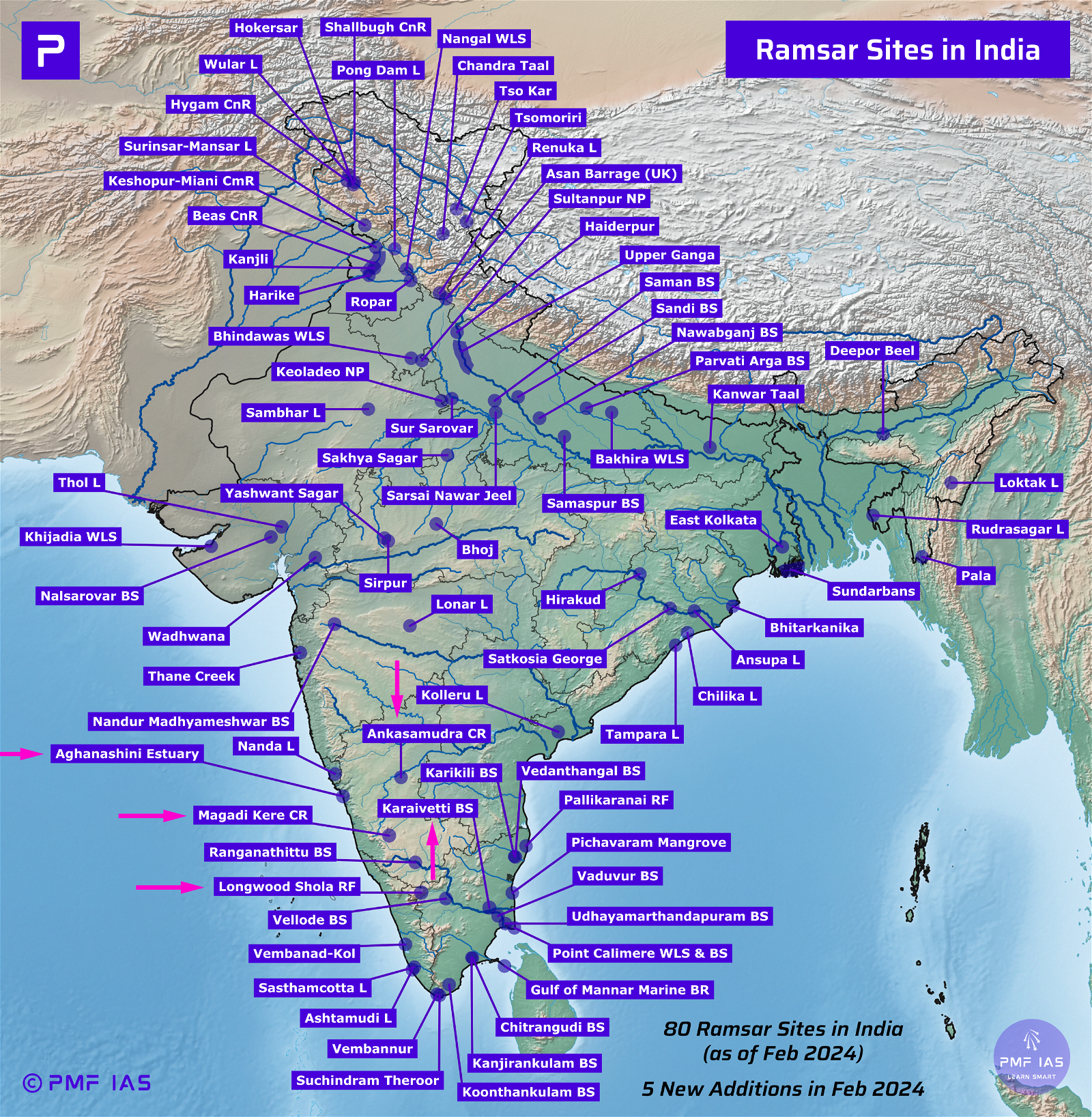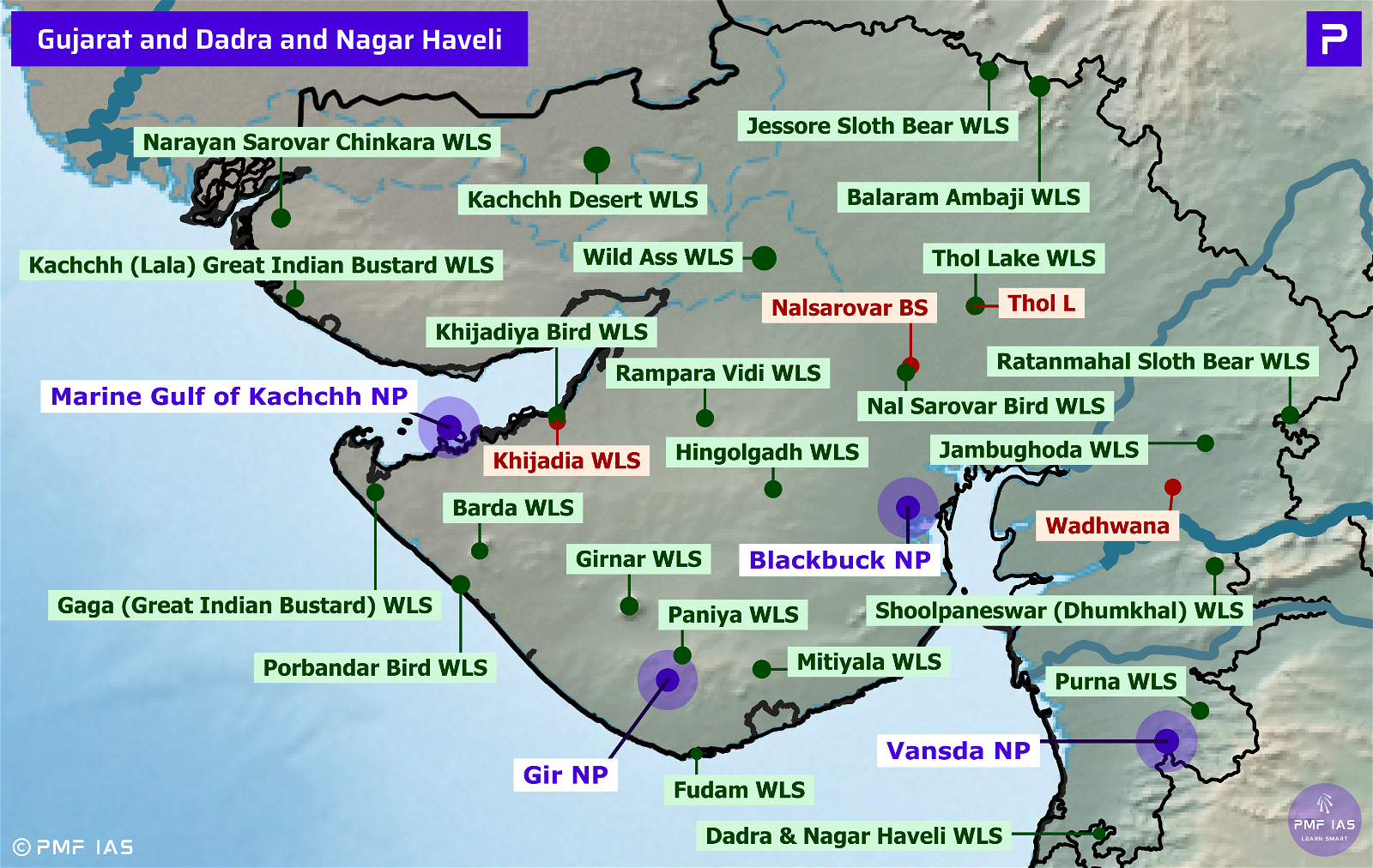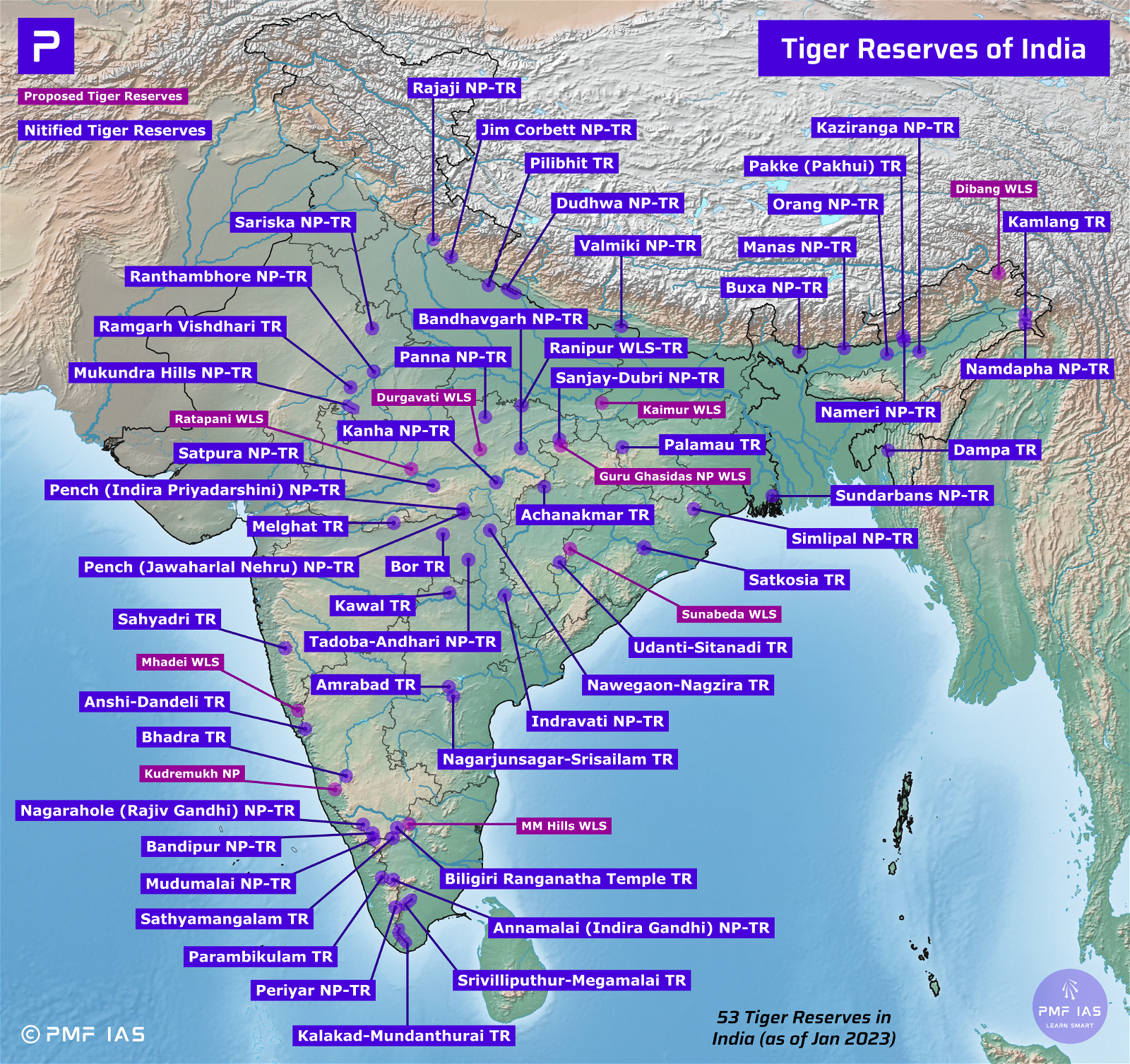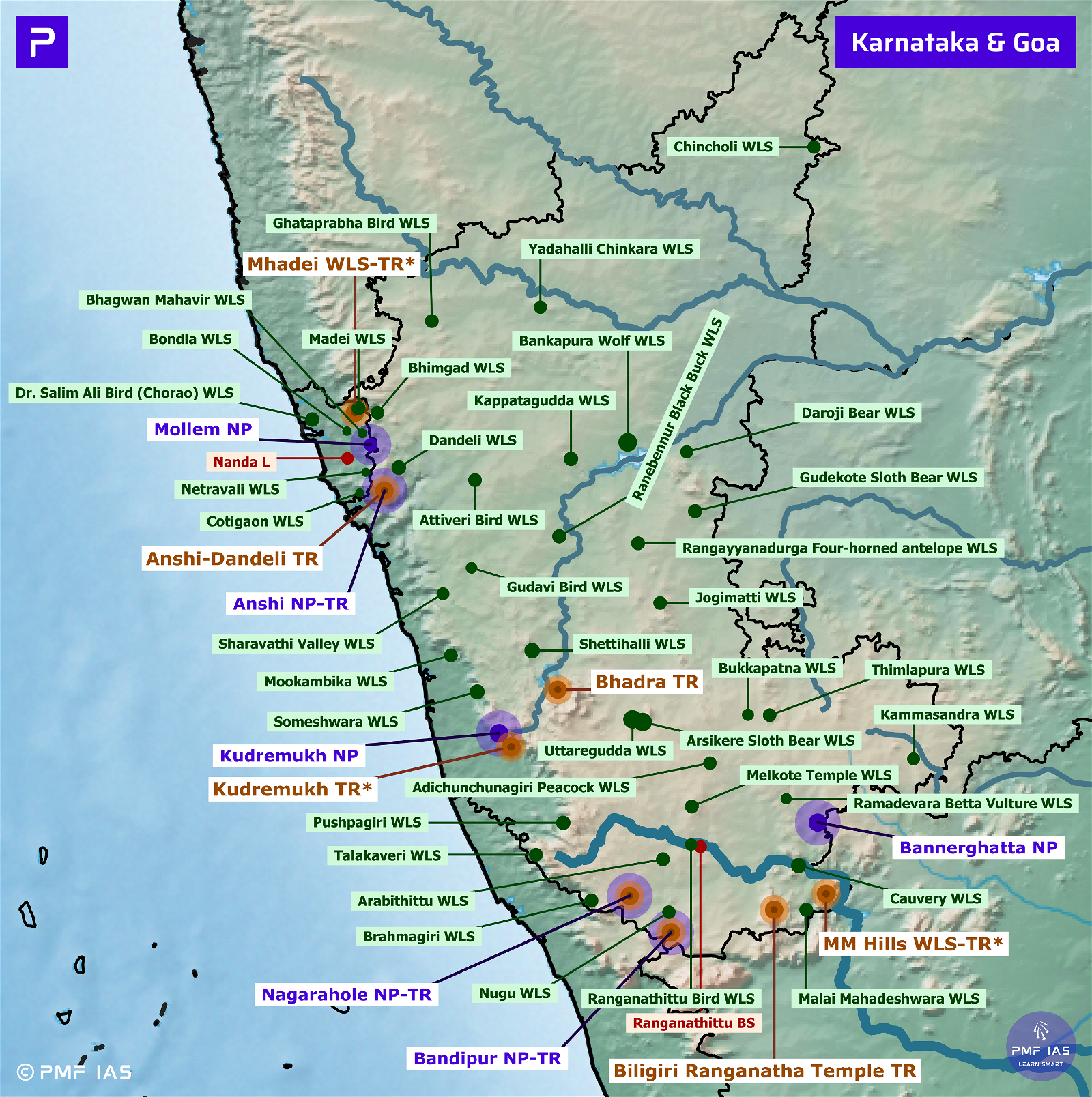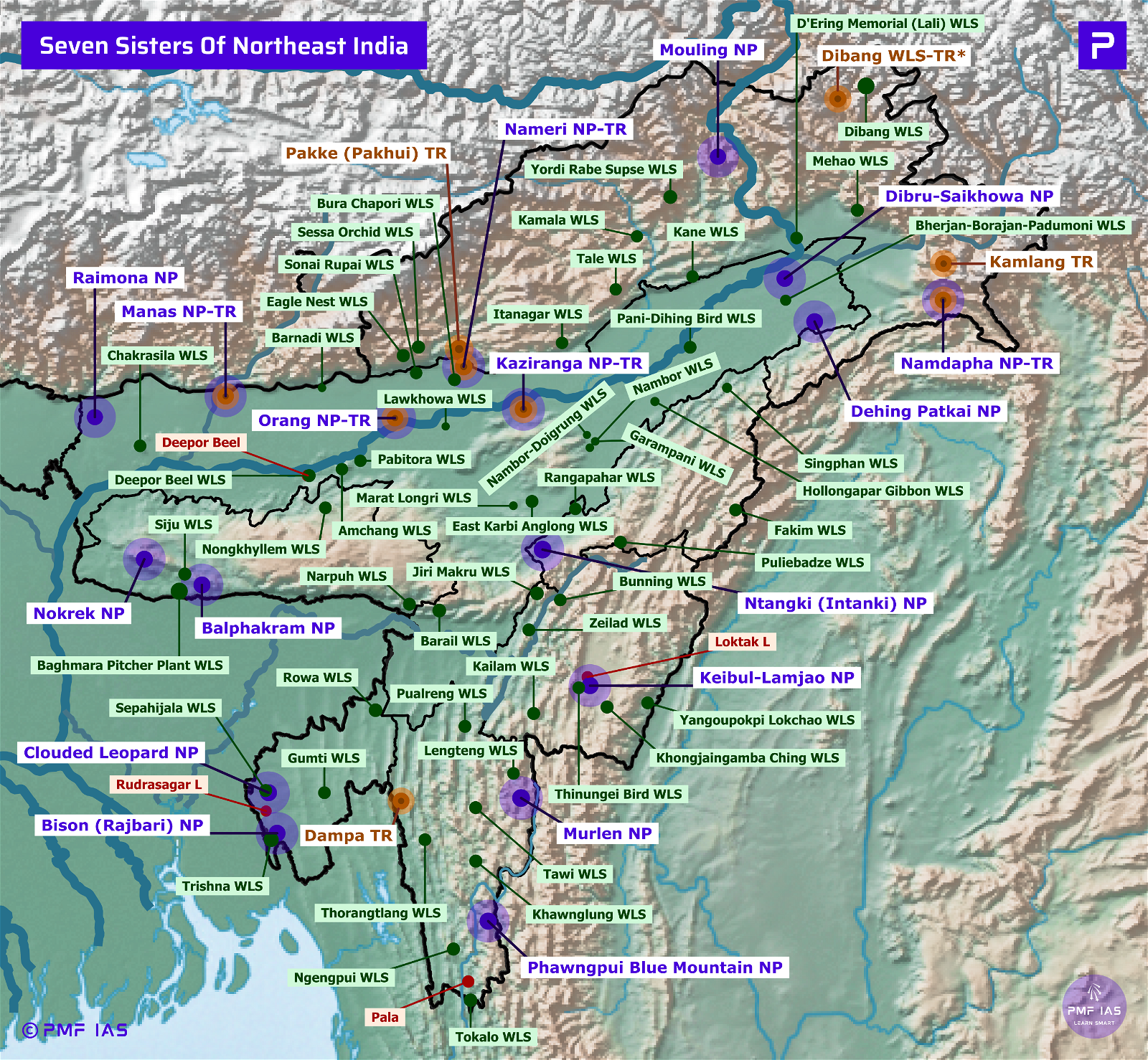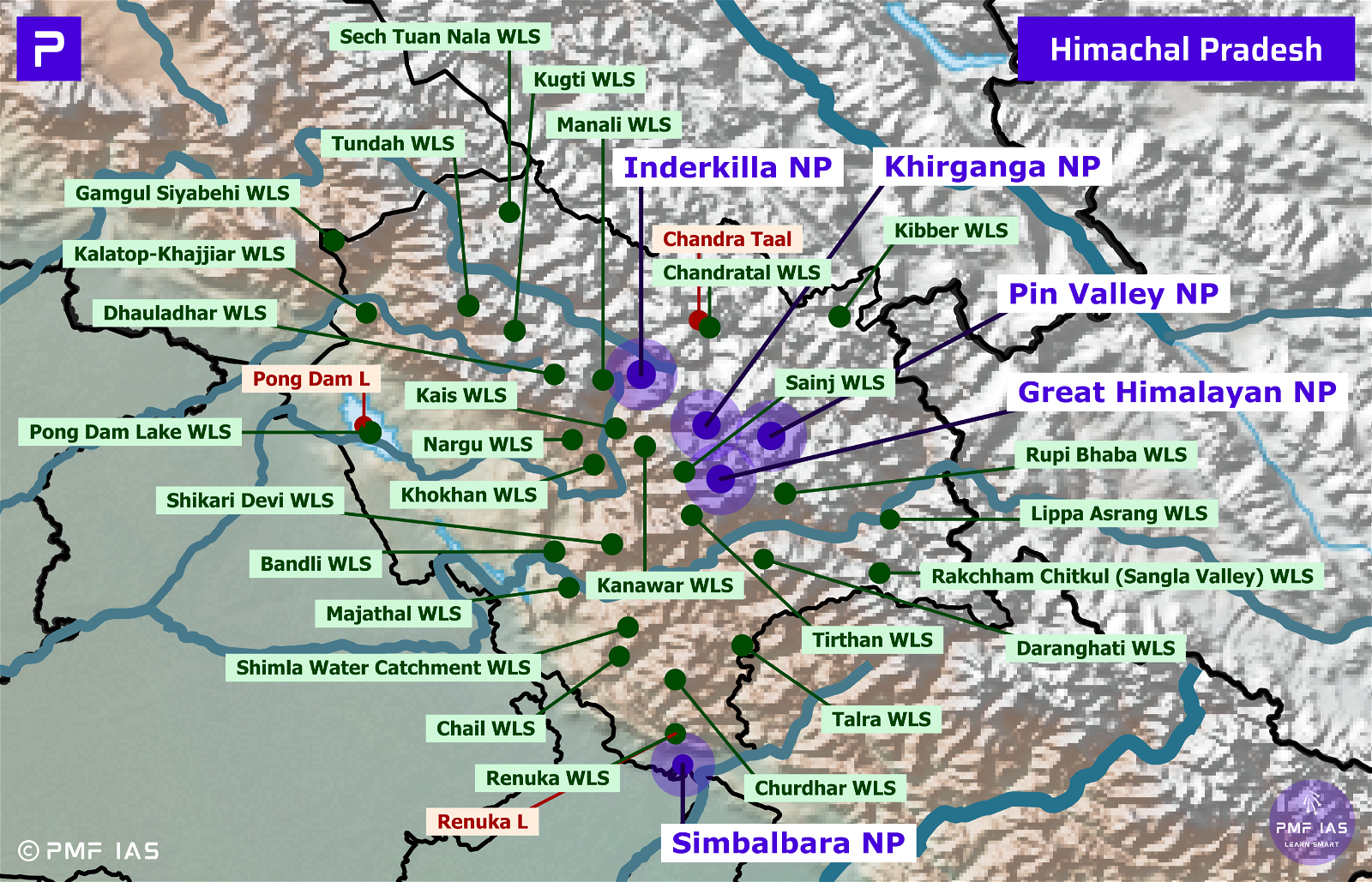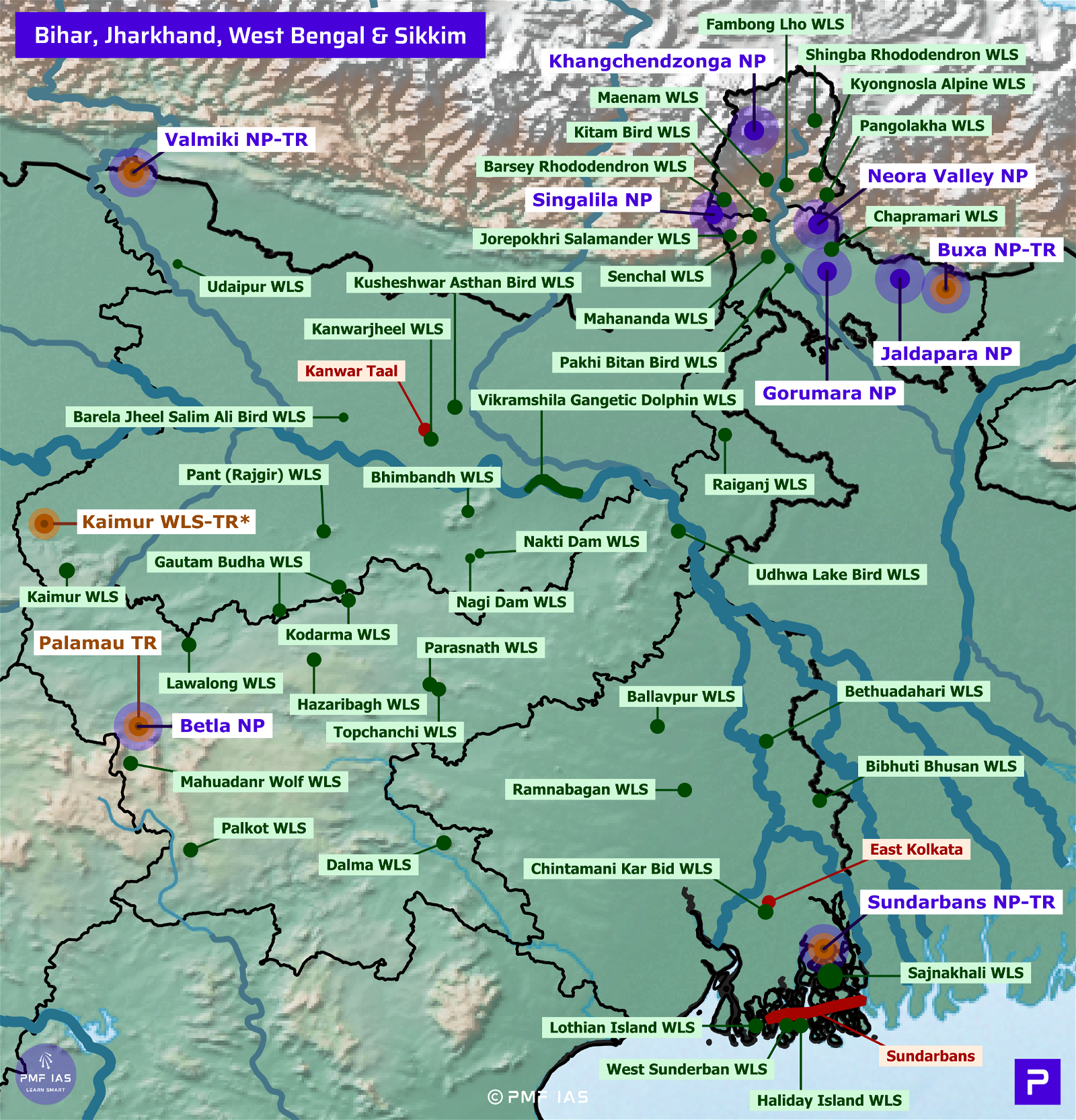
Punjab and Chandigarh, Wildlife Sanctuaries & Ramsar Sites
Subscribe to Never Miss an Important Update! Assured Discounts on New Products!
Must Join PMF IAS Telegram Channel & PMF IAS History Telegram Channel
Last updated on May 10, 2024 7:37 PM
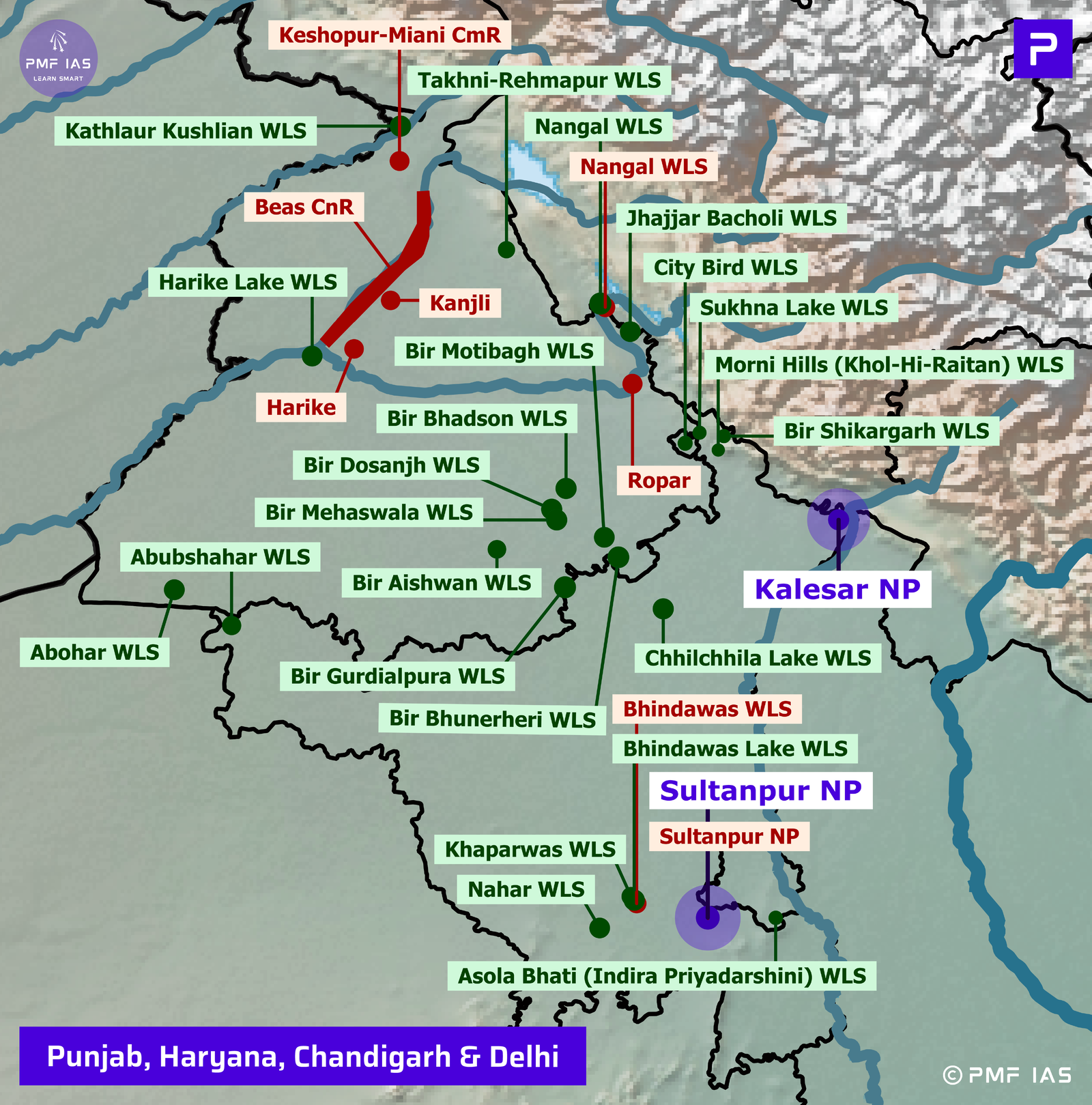
Wildlife Sanctuaries of Chandigarh
City Bird Wildlife Sanctuary
- It is located in Chandigarh city. It is also known as Parrot Bird Sanctuary as it is primarily a habitat of parrots.
Wildlife Sanctuaries of Punjab
Abohar Wildlife Sanctuary
- It is located close to the intersection of Haryana, Rajasthan & Punjab. Unlike other wildlife sanctuaries that are located over public land, the Abohar Wildlife Sanctuary spreads over the private land inhabited by the Bishnoi community.
- The black buck (LC) (the State Animal of Punjab) is considered to be sacred by the Bishnois. The community also protects the blue bull or Nilgai (LC).
- Major Fauna: Blackbuck (LC); the State Animal of Punjab and blue bull or Nilgai (LC).
- Blackbuck (LC) is considered to be sacred by the Bishnois. They protect both blackbuck deer and blue bull.
Harike Lake Wildlife Sanctuary (Ramsar Site)
- It is a large wetland formed after constructing the headworks across Sutlej river. The headworks is located downstream of the confluence of the Beas and Sutlej Rivers.
Nangal Wildlife Sanctuary (Ramsar Site)
- It is located in the Shiwalik foothills. It occupies a human-made reservoir constructed as part of the Bhakra-Nangal Project. Here, Indian and Chinese Prime Ministers formalized ‘Five Principles of Peaceful Coexistence’ in 1954.
Others
- Bir Aishvan Wildlife Sanctuary: Sangrur district.
- Bir Bhadson Wildlife Sanctuary, Bir Bunerheri Wildlife Sanctuary, Bir Dosanjh Wildlife Sanctuary, Bir Gurdialpura Wildlife Sanctuary, Bir Mehaswala Wildlife Sanctuary and Bir Motibagh are all located in Patiala district.
- Jhajjar Bacholi Wildlife Sanctuary: Rupnagar district
- Kathlaur Kushlian Wildlife Sanctuary: l Gurdaspur district.
- Takhni-Rehampur Wildlife Sanctuary: part of the Shivalik range in the Hoshiarpur district.
Ramsar Sites of Punjab (6)
Beas CnR
- It is a 185 km stretch of the Beas River meandering down from the Himalayan foothills. The stretch is dotted with islands, sand bars and braided channels.
- It hosts the only known population in India of the Indus River dolphin (EN). A programme was initiated to re-introduce the Gharial (CR).
- Endangered: Masheer/Himalayan Mahseer/Golden Mahseer (EN), Hog Deer (EN), Smooth-Coated Otter (VU)
[UPSC 2022] Which of the following is not a bird?
|
Harike Wetland
- It is a shallow water reservoir at the confluence of the Beas and Sutlej rivers.
Kanjli Wetland
- It is associated with the first Sikh guru, Shri Guru Nanak.
Keshopur-Miani CmR
- The Reserve is a mosaic of natural marshes, aquaculture ponds and agricultural wetlands.
- Endangered Species: Common Pochard (VU), Spotted Pond Turtle (EN)
Nangal WLS
- It occupies a human-made reservoir of Bhakra-Nangal Project in the Shiwalik foothills.
- The site is of historical importance as the Indian and Chinese Prime Ministers formalized the “Five Principles of Peaceful Coexistence” there in 1954.
- Endangered Species: Indian Pangolin (EN), Leopard (VU), Egyptian Vulture (EN)
Ropar Wetland
- It is formed by the construction of a barrage for diversion of water from the Sutlej River.
- Major Fauna: Smooth Indian Otter, Hog Deer, Sambar, Indian Pangolin
Last updated on May 10, 2024 7:37 PM





![PMF IAS Environment for UPSC 2022-23 [paperback] PMF IAS [Nov 30, 2021]…](https://pmfias.b-cdn.net/wp-content/uploads/2024/04/pmfiasenvironmentforupsc2022-23paperbackpmfiasnov302021.jpg)


